If you’re a newbie to cruising culture, take a few minutes to learn the cruise ship lingo. Knowing the language both on board and on shore will make you feel more at ease on your very first cruise. We’ve compiled a list of the most essential terms for you to be familiar with before you step on board.
From knowing the ins and outs of stateroom design to understanding cruise ship nautical terms, you’ll be ready to hit the waves with confidence.
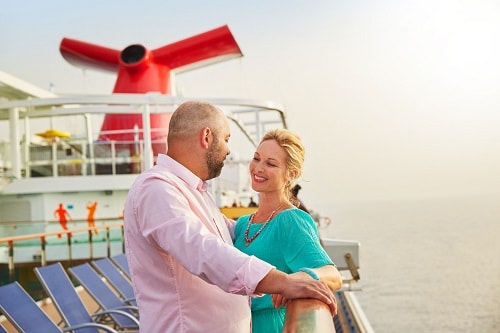
Planning Your Cruise
- Crossing: A voyage across the water – in other words, a cruise is a crossing. For example, if you take a cruise to Europe, you can depart from New York and cross to ports of call, including Northern Ireland.
- Departure port/embarkation port: Both of these terms refer to the port or location where your cruise begins and ends. Carnival has many departure ports in the United States. For example, you can cruise to the Western Caribbean from the departure port of Mobile, Alabama.
- Disembarkation: This is when you leave the ship at the end of your trip.
- Embarkation: It’s when you board your cruise ship at the beginning of your trip.
- Port of call: A port of call is a destination on your cruise and where you’ll likely be able to enjoy shore excursions. For example, if you take a cruise to Mexico, you can depart from one of three ports in California and visit multiple ports of call in one trip, including Cozumel, Costa Maya and Mahogany Bay.
- Shore excursion: A shore excursion is an activity off the ship at a port of call that you can purchase as part of your itinerary. For example, if you cruise to The Bahamas, you can take a shore excursion in Half Moon Cay. You may want to book the educational Stingray Adventure shore excursion there that allows you to interact with the sea creatures.
- Tender: Also called a lifeboat, a tender is a small boat that takes you from the ship to shore when the cruise ship anchors in a harbor.
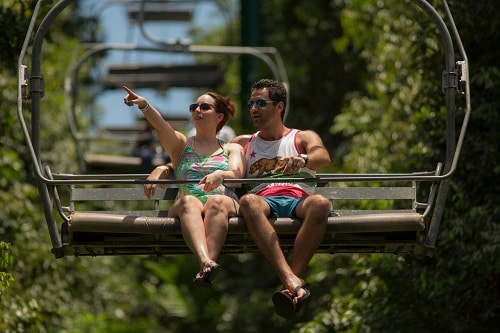
Stateroom Speak
Even before booking your cruise, you’ll want to know the types of staterooms that are available to ensure a comfortable trip. Whether you’re cruising solo or with a group, this list helps you choose the right stateroom for your needs.
- Balcony stateroom: This room has a small, personal, outdoor balcony. A balcony stateroom is recommended when taking a cruise to Alaska, for example, so you don’t miss any unexpected wildlife or glacier sightings.
- Interior stateroom: Located in less active spots on the ship, interior staterooms are comfortable for sleepers who prefer a quiet place to curl up after a day of fun and activities.
- Ocean view stateroom: An ocean view stateroom with a porthole or window lets you gaze out at ocean vistas and ports of calls.
- Specialty stateroom: This has a thematic setting that caters to families, couples or solo guests. Specialty staterooms include Cloud 9 Spa staterooms located next to the Cloud 9 Spa Family Harbor staterooms are next to the Family Harbor Lounge, a great escape when traveling with kids.
- Suite stateroom: Larger rooms that are ideal for family cruises. These suites give everyone in your group ample room to stretch out.
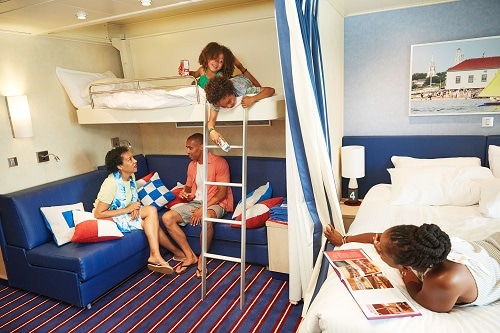
Cruise Ship Terminology
It pays to understand cruise ship terms and definitions so you don’t wander around too much during your vacation. Although, while on board, you’ll never be truly lost. You can find a deck plan of each vessel so you can get to know it before your trip in the comfort of your home. Until then, here’s a crash course in ship architecture.
- Bow: The bow is the front of the ship.
- Bridge: The bridge is the location from which the captain steers the ship.
- Galley: A galley is a ship’s kitchen. On a cruise ship, there are many galleys.
- Gangway: The gangway is the ramp or staircase that you’ll use to embark or disembark the ship.
- Helm: The helm is the area of the bridge on which the steering wheel is located and used by the crew only.
- Hull: The hull is the outside of the ship.
- Keel: The keel is the ship’s bottom center.
- Leeward: The side of the ship where you’ll feel most sheltered from wind is leeward.
- Lido: Lido is an often-used term because it’s the deck where you’ll find the outdoor pools.
- Midship: This is the middle of the ship.
- Port: The left side of the ship as it’s facing forward is called port. If you have a hard time remembering that, just keep in mind that “left” and “port” both have four letters.
- Starboard: The right side of the ship is starboard.
- Stern/aft: This is the rear part of a ship closest to the casual dining
- Upper deck: The upper deck is typically the area closest to the entertainment, fun and outdoor deck areas.
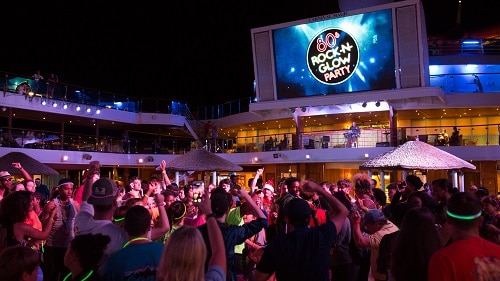
Dining Discussions
- Cruise casual: This is what you can wear most nights at dinner. For men, that includes slacks, khakis, jeans, dress shorts and collared sport shirts. Women wear casual dresses and skirts, pants, capri pants, dressy shorts and dressy jeans.
- Cruise elegant: This is the one or two nights on a cruise where it’s suggested you wear evening wear to dinner in the main dining room and some other restaurants. For men, that means dress slacks, dress shirts and sport coats (optional). For women, it’s cocktail dresses, fancier pant suits or skirts. In restaurants, such as the Steakhouse, you will be required to wear tasteful attire.
- Formal night: There are two formal, or elegant, nights on longer cruises. Elegant nights mean formal suits and ties or tuxedos for men and evening gowns for women. It’s not required to dress formally, yet formal attire is welcome.
- Main seating/late seating: This means there’s an assigned schedule and seating for passengers in the main dining rooms.
- Open seating: There’s no fixed schedule and no seating arrangements for dining with open seating.
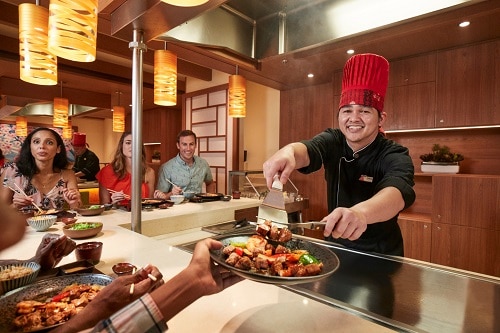
Crew Member Chatter
Who wouldn’t want to be a crew member on a cruise to Hawaii? Here are some of the cheerful faces you’ll meet on board:
- Cabin steward: Crew member responsible for the housekeeping of your stateroom.
- Captain: Crew member in charge of the cruise ship, responsible for the crew and passenger safety.
- Cruise director: Crew member who organizes for the ship’s activities and entertainment and is often the emcee for onboard events.
- Maître d’: Crew member responsible for the dining room.
- Porter: Crew member on land to help you with your luggage curbside before you embark the ship.
- Purser: Crew member in charge of onboard billing and monetary transactions.
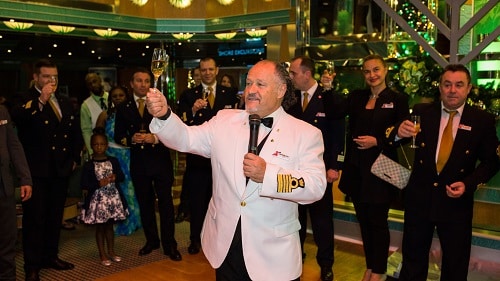
Nautical Lingo
Knowing nautical terms in the cruise ship world is important when you’re underway (which means moving through the ocean). You may hear the captain discussing knots with another crew member.
- Knot: A unit of speed at which ships travel, which is one nautical mile per hour.
- Mooring: A place where a ship is tied, such as the dock when in port.
- Wake: The trail of water created at the back (stern) of the ship as it moves forward in the water.
It’s perfectly fine if you forget your cruise-speak and just say “meet me at the room,” instead of stateroom, or “where’s customer service?” instead of asking to see the purser. On a Carnival cruise, you can just be yourself and learn at your leisure. Once you have your first cruise under your belt, you’ll be well on your way to becoming a seasoned cruiser with insider tips of your own.
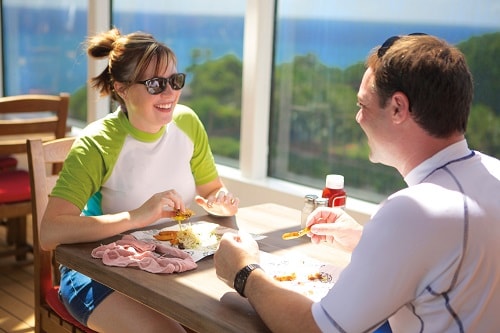
Note: Onboard activities, shore excursions, and dining options may vary by ship and destination.
